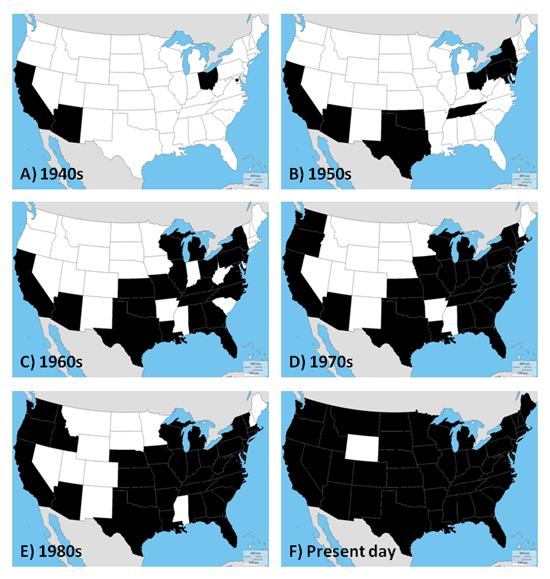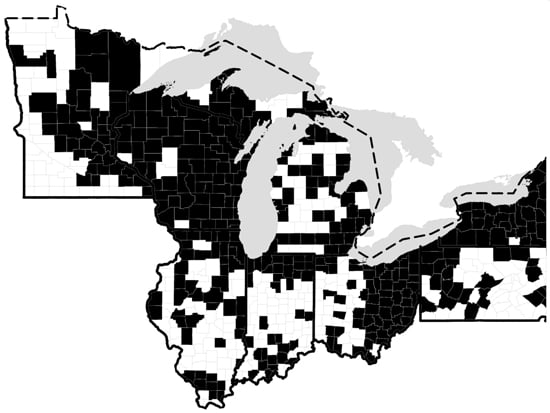Native Range
Eurasian watermilfoil (EWM) is native to Eurasia and is found throughout Europe, Asia, and northern Africa ( Couch and Nelson 1985, Nichols and Shaw 1986).
Present Range
EWM can now be found on every continent except Antarctica (Jacobs 2009).
Spread Throughout the United States
EWM was possibly introduced into the United States in the late 1800s from ship ballast dumped in the Chesapeake Bay area; however, circumstantial evidence suggests that EWM may have been introduced to the US by the Plant Introduction Branch of the USDA as an ornamental plant that escaped cultivation (Aiken et al. 1979, Couch and Nelson 1985). The earliest confirmed detection of EWM in the US was October 29, 1942 in Belch Spring Pond in Washington, D.C. (Couch and Nelson 1985). EWM was also a popular aquarium and ornamental pond plant and could have been accidentally or intentionally introduced on many occasions. The ornamental plant trade, aquarium and fish pond escapes, and dispersal via boats and waterfowl contributed to its rapid spread westward throughout the country. It was also used as fresh packing material for worms sold to anglers in Oklahoma resulting in its spread throughout that state (Couch and Nelson 1985). EWM was intentionally planted to improve fish habitat in a Tennessee lake around 1953 (Aiken et al. 1979). That population subsequently escaped into the Tennessee River Valley reservoirs resulting in a major infestation of over 10,000 hectares shortly after (Aiken et al. 1979). EWM became a major weed problem nationally in the 1960s and '70s and has since been reported in every state except for Hawaii and Wyoming (figure 1).

EWM was first collected in the Great Lakes Basin when it was discovered in 1949 Put-in-Bay, Ohio on Lake Erie. According to herbarium records, it was first collected in Michigan in St. Clair County in 1961; however, due to the difficulty distinguishing it from northern watermilfoil (Myriophyllum sibiricum), it wasn't recognized as EWM until 1970 and was most likely established in Michigan well before that (Reznicek and Voss 2012). It was later collected in Whitmore Lake, Washtenaw County in 1965 (Coffey and McNabb 1974). The first detection of EWM in Michigan's Upper Peninsula was a population discovered in Little Bay de Noc near Escanaba between 1972 and 1973 (Coffey and McNabb 1974, Reznicek and Voss 2012). A small (250 square feet) infestation of EWM was recorded in 2006 in the Les Cheneaux Islands of Northern Lake Huron. That small patch later grew to a mat of over 400 acres by the end of 2012; conservatively, over 1500 acres of EWM have been identified in the Les Cheneaux Islands (Smith 2010). EWM is now found throughout the Great Lakes states (Figure 2) and has been reported to be present in 11 counties in the Upper Peninsula (Reznicek and Voss 2012, EDDMapS 2014), including Houghton County where EWM and Hybrids were discovered in the Keweenaw Waterway in 2012 (KISMA 2013).

